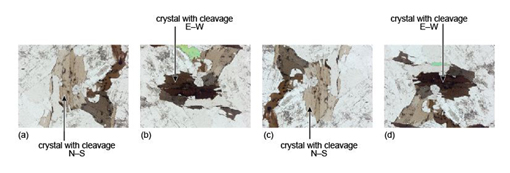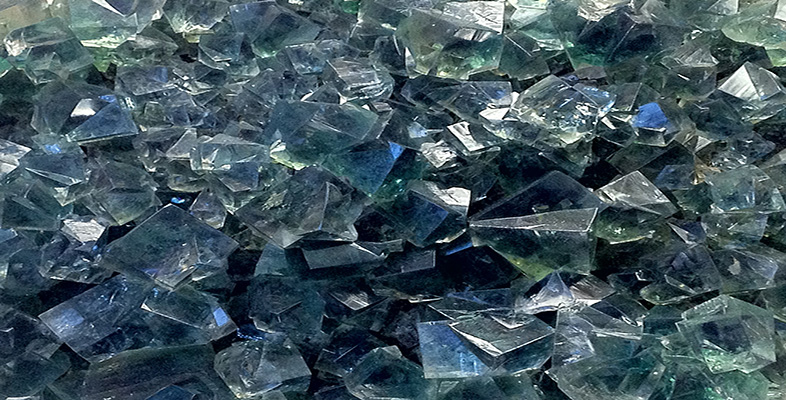2.2.3 Pleochroism
When plane-polarised light passes through an isotropic crystal, where the properties of the crystal are the same in all crystallographic directions, the colour of the transmitted light (due to the absorption characteristics of the crystal, Section 2.1.1) doesn't change as the crystal is rotated. However, when plane-polarised light passes through some, but not all, anisotropic crystals, and splits (Section 2.2.2), the light interacts with different arrangements of atoms with different absorption characteristics as the crystal is rotated, thus affecting the crystal's colour.
As an example, Figure 30a shows a very thin slice of biotite (a common rock-forming mineral) which has a faint beige colour when viewed in plane-polarised light and the cleavage is north-south. On rotating the mineral through 90°, the colour gradually changes to deep brown when the cleavage is east-west (Figure 30b). The same effects are repeated in Figures 30c and d. This property, whereby the colour of a mineral varies on rotation in plane-polarised light, is called pleochroism.

